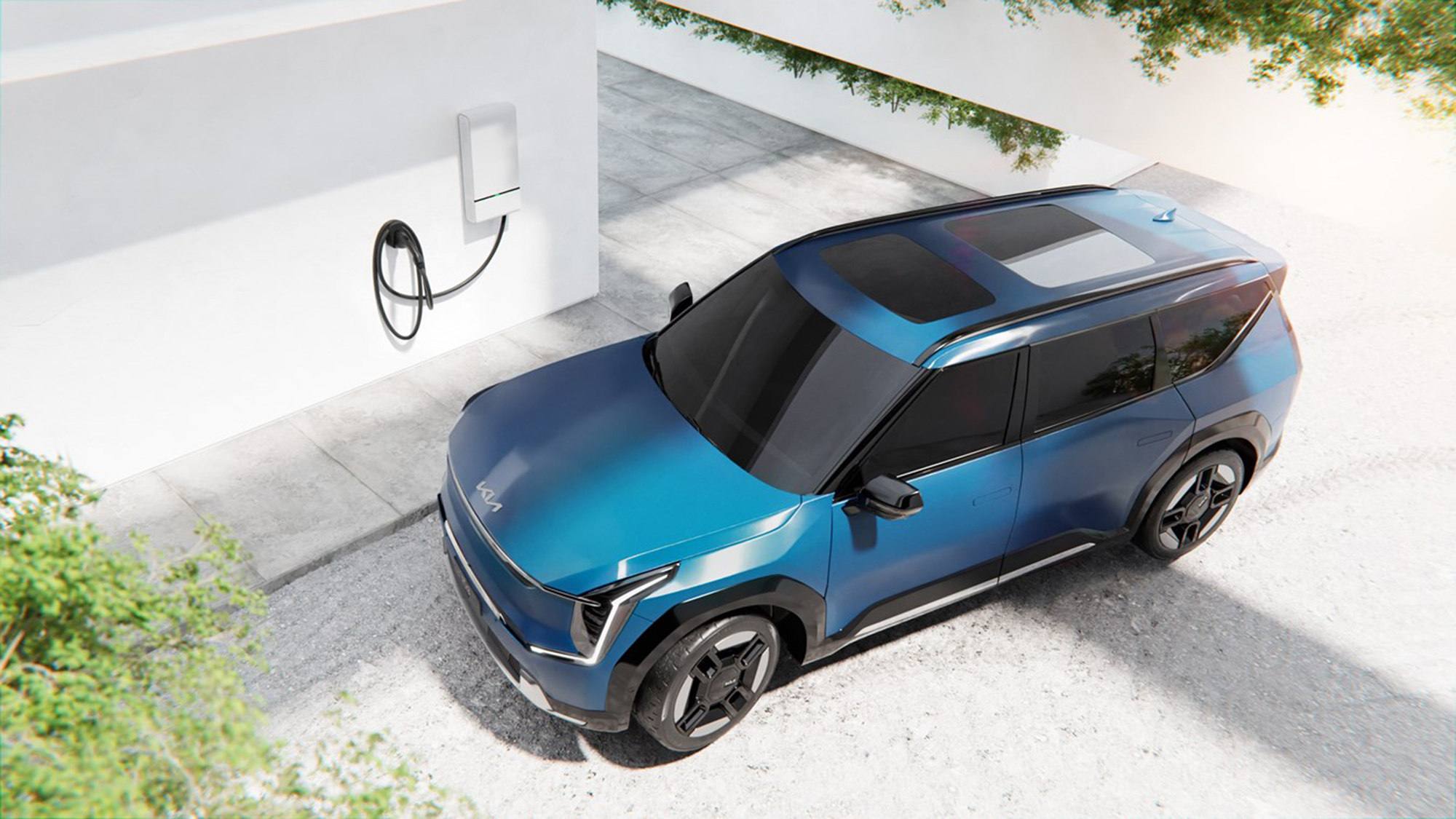

Korean auto manufacturer Kia opened access to pre-orders in October for its newest all-electric vehicle, a three-row SUV called the EV9. The EV9 will compete in the hot family-vehicle segment and includes up to 304 miles of range with the single-motor setup (up to 280 miles with two motors) and towing capacity of up to 5,000 pounds.
But the most interesting feature of the EV9 isn’t how fast it charges or how many passengers it can carry; it’s the vehicle’s ability to conduct bidirectional charging from the SUV to your home and back around in a neat circular energy cycle. Now that an agreement with Wallbox (an EV charging and energy management solutions company) is in place, Kia is even poised to deliver energy back to the community grid through the EV9.
Here’s how the automaker is sharing energy between cars and homes.
Energy management throughout the cycle
Earlier in 2023, Kia sibling Hyundai unveiled its Ioniq 6 EV with a playful ducktail spoiler on the rear. It was also launched with the ability to charge up in about 18 minutes and provides a vehicle-to-load (V2L) energy exchange to charge and operate electric devices. Think coffee machines, a hair dryer, or charging up a portable lantern on a camping trip, or plugging in a laptop while at a work site.
On the scale of vehicle-to-X charging, V2L is just the starting point. The public is looking for more options, including V2H (vehicle-to-home), V2G (vehicle-to-grid), and V2V (vehicle-to-vehicle). The Wallbox partnership comprises its next-gen bidirectional charger. The company says that a Kia EV9 can hold between 76 and 100 kilowatt hours of energy, which is more than five times the energy of a standard home storage system. That’s enough to power up the average home for up to four days.
In case of a power outage, the bidirectional charger automatically switches the user’s power source from the grid to their vehicle to allow a homeowner to use their EV battery as an emergency generator, Wallbox says. Consider the number of power outages in the past few years due to big storms like Hurricane Ian in Florida, the ice storm that shut down parts of Texas, and rolling brownouts and blackouts in California. The Ford F-150 Lightning electric truck made headlines for solving power issues of scores of people for days after outages affected wide swaths of communities.
Connected home
Kia showcased vehicle-to-home (V2H) capability at the Los Angeles Auto Show by building a demo “Kia Connected Home” to show how simple bidirectional charging can be. The steps are straightforward, Kia spokesperson Jeff Jablansky explains to PopSci: install the bidirectional charger at your home, and plug in your vehicle. Based on intelligent time-of-day management and vehicle energy needs, the Wallbox Quasar 2 can either charge the EV9 or discharge power from the EV9 to the home.
Typically in a V2G scenario, the EV’s battery is charged during off-peak hours, which is typically in the wee hours of the night when most people are sleeping. As an example, a driver could commute to work, usually consuming only a fraction of the battery capacity. They can plug the car into a charger, which can both charge the battery back up to 100 percent and remain on standby in case the grid needs its energy during peak hours. At home, it works similarly by utilizing the ebb and flow of energy needs in a “cloud” versus a straight pipeline from A to B. Some companies are offering buyback for energy in the form of credits on their home bill.
Underneath all of that, a software system manages the power allocation and routes it to where it’s needed most. Wallbox helps with that, too.
Kia is focused intently on its sustainability goals, and the EV9 is one of 11 EV models promised by 2026. The company says it is committed to 100 percent renewable energy by 2040 at its manufacturing sites.
[ Related: The 50 greatest innovations of 2023 ]
